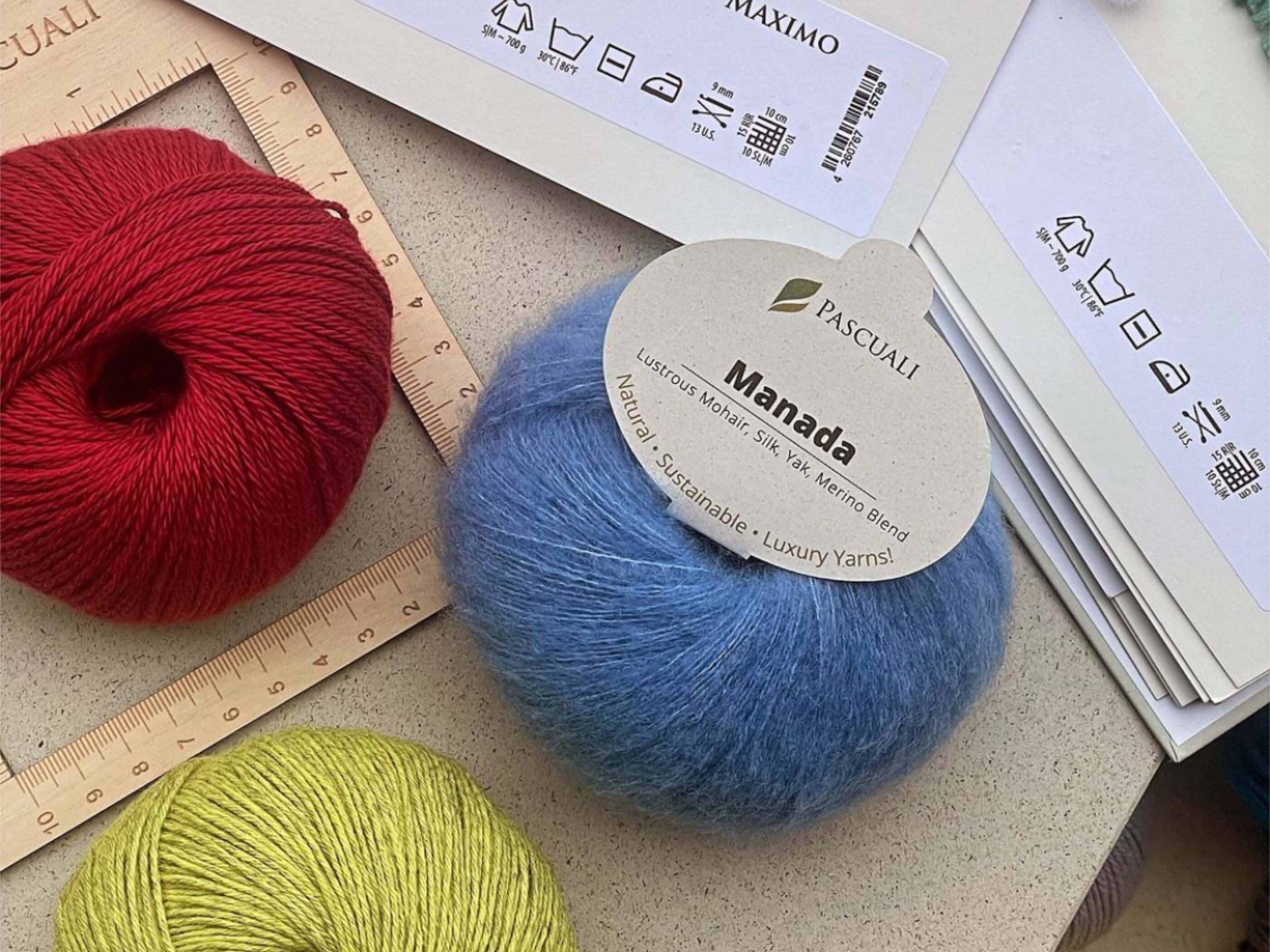By Claudia Ostrop
Discovering a hole in your woollen sweater is probably the most horrible thing that can happen. Did it just get caught somewhere, or is it moths? What a nightmare! And how much worse can it get when you realize that you are hoarding vast amounts of wool in your stash (something quite common among knitters ...)? We have put together the following information with some useful tips, so that you know what to do when your clothes have been attacked by moths and how to prevent them from ever coming for a visit.
Clothes Moths: A Nightmare for Knitters and Wool Lovers Alike
Check your wardrobe thoroughly at the slightest suspicion that moths might have lodged in it. Despite being rather small, the damage a moth or its voracious offspring can cause is great.

© IStock.com/Tomasz Klejdysz
Tineola Bisselliella – An Inconspicuous Butterfly
Tineola Bisselliella - the Latin name for the common clothes moth sounds almost flowery, doesn't it? However, the butterfly belonging to the moth family is rather inconspicuous. Moths are straw-yellow, silky and shiny and grow to be between 6 and 9 mm large. The span of their fringed wings is 10 to 15 mm. Moths can be found in the house all year round, even if their flight time only lasts from May to September.
How Long Do Clothes Moths Live? Life Cycle from Egg to Butterfly
Clothes moths usually don´t live longer than a few weeks. They usually do not eat anything during this time. Their offspring, on the other hand, are the real problem: the larvae feed on materials that contain keratin, such as wool, feathers and hair. A moth lays up to 250 eggs individually on suitable "food" for the larvae and dies soon afterwards. The yellow-white larvae hatch after about two weeks, depending on the temperature. They feel most comfortable at 77 °F to 86 °F and high humidity. They spin mats with textile fibres, which they only abandon to acquire food. After about two months they reach a mature stage. If it is cooler, the individual phases can take much longer.
How Can You Prevent Clothes Moths?
Once the uninvited guests are in your home, there will be a lot to be done to get rid of them. So, try to make the moths as uncomfortable as possible with a few preventive measures.
Air Clothes Out Regularly
Clothes moths prefer places that are warm and dark; they also like to be undisturbed. Regularly taking the (woollen) clothes out of the closet, shaking them out through an open window or hanging them outside to air is an easy way to prevent them. Also, you shouldn't put your woollen clothes back in the closet immediately after taking them off, but let them air out for a day, because human skin flakes are also made of keratin and moths like the smell of sweat. Moths can´t stand fresh air and movement in the wardrobe.
Frighten Away Clothes Moths with Scents
Clothes moths have a completely different sense of smell than humans. While they are not bothered by our “stale” body odours, they can´t tolerate many fragrances that are pleasant to us. You can scare moths away quite well with them. Classic scents are lavender, cedar wood, orange peel, cloves and patchouli which can be hung in the wardrobe in scented bags. Cedar wood is available in chips or as discs which should be sanded regularly so that the smell is reactivated. You can also use scented oils. We have something wonderful for you: Finito, a moth protection oil. It is a blend of lavender, patchouli and cedarwood oils. We think it smells wonderful! Just put a few drops on a paper tissue, a stone or a piece of (cedar) wood and put it with your woollen clothes (you can also put it in your stash as well!). The fragrance lasts a surprisingly long time, and when it is no longer noticeable, a few drops are enough to freshen it up.

Preventing Moths with Chemistry
In the past, mothballs were used to prevent moths. Today it is mostly paper strips that are soaked with a biocide / insecticide and hung in the closet to repel or kill them. We mention these here for the sake of completeness, but the active ingredients are very harmful to the environment.
The pheromone sticky traps used to lure male clothes moths also come from the laboratory. This can prevent multiplication because the male moths get stuck in the glue. However, you will not be able to completely exterminate the male moth population in this way. The traps are also used to control infestation, but you should know that the pheromones may lure the (male) moths into the house in the first place. If there is a seductive lady moth smell coming from the inside, male moths will likely come through the open window. If only male moths come inside, it is not too bad. Nevertheless, the shock of finding a glue trap full of moths after a short time is quite unpleasant.
Moth Proofing Storage
When thick woollen pullovers or shawls and hats are to be stored away for the warm months, it is of course first advisable to put them in a well ventilated storage place. When in doubt, wash beforehand: You can read our tips on wool care here. You can either wrap the clean and dry garments in (newspaper) paper or wrap them in linen or cotton pillowcases. Since moths don´t eat paper and are not particularly interested in vegetable fibres, this offers good protection. Alternatively, the garments can also be stored airtight in plastic bags or boxes. In addition, adding a little scent to the paper, the covers or placing a scented cloth in the bag or box, will guarantee that the moths will run away as quickly as possible.
Clothes Moths in the Wardrobe - What Now?
Have you opened a cupboard or a drawer only to find a moth fluttering right at you? Have you taken out a piece of woollen clothing and discovered holes or even webs in it? It is time to quickly take action so that you can stop further damage. But what do you do? Call the exterminator, grab the spray can with insecticide? First of all, please get a thorough picture of the extent of the infestation. Empty the closet (or dresser) completely and thoroughly examine all clothing.

© IStock.com/Tatiana Gorbunova
Worst Case Scenario: Eaten Away Beyond Recovery
If you are really unlucky, the moth larvae have done a great job and the item of clothing has been irretrievably eaten away. This can happen when, for example, a sweater has been left untouched in the closet for a very long time and, in extreme cases, not only a generation of moths has enjoyed it. Then please: Put it in the bin. Even better, put it in a garbage bag, firmly knotted and throw it out!
Clothes Moths in Knitted Garments? Get Them Out in the Fresh Air Quickly!
It is best to get all infected clothing out into the fresh air first. Shake out thoroughly, tap them out, carefully vacuum with a vacuum cleaner. I fit is sunny outside, place things in the sun, turn them over and over again. This allows any leftover eggs and larvae to dry up.
Fight Clothes Moths with Warmth
Moths and their offspring like it cosy and warm, but not too warm: One hour at 120 °F to 140 °F and the pests are done for. Unfortunately, this is also too warm for many items of clothing made of wool, especially in combination with water and the washing movement. A convection oven, with temperature regulation that is reliable, is a good alternative. But please stay alert and don't let the beautiful cardigan bake! In the summer, you can take advantage of the nice weather and put the infested clothes outside in the sun.
Freezing: Cold Death for Clothes Moths
Freezing is an alternative method for delicate items. A week in the freezer at minus 4°F should kill all stages of development of the clothes moth. To be on the safe side, repeat the procedure again after three weeks.
Fight Clothes Moths with Parasitic Wasps
Known as Trichogramma Evanescens, these wasps are only 0.3 mm in size and are natural enemies of clothes moth. These wasps lay their eggs in the moth eggs preventing the voracious moth larvae from hatching. When there are no more moth eggs, the parasitic wasps also die. The microscopic parasitic wasps are not dangerous to humans or pets. You can have them sent to you and receive subsequent deliveries at set intervals so that moths are safely killed at all stages of development. The parasitic wasps come in cardboard cards that are simply placed at the site of infestation.
Thoroughly Clean the Wardrobe
After all measures have taken to rescue and care for affected items of clothing, the wardrobe must of course not be forgotten. Empty the wardrobe and vacuum all compartments and drawers thoroughly, especially the cracks and corners where eggs or larvae could hide! Once this is done, dispose of the vacuum cleaner bag out straight away. Wipe the cupboard and drawers thoroughly with vinegar water. If you want to be on the safe side, use a hair dryer to completely dry corners and cracks.
Using Chemicals to Eliminate Clothes Moths
Clothes moths can also be exterminated with chemicals. However, given the fact that there are so many alternative prevention and treatment options, we believe that insecticides and pesticides should be avoided if possible. These chemicals are very harmful to the environment and not exactly beneficial to human health. If the infestation is so extreme that you cannot get any further with the methods described here (e.g. because furniture and carpets are also infested), we suggest you call a professional pest controller.
Mending or Hiding Holes Caused by Clothes Moths
Once clothes moths and their voracious offspring have been safely exterminated, it is time to deal with the damage that the larvae have left on woollens. It is a fact that pullovers don't necessarily look great once they have been mended. But with the beautiful trend of “visible mending,” highlighting imperfections can be quite a catchy solution. Visible mending is not about repairing a hole as inconspicuously as possible. Instead, the damaged area can be ornamented in bright colours in a creative and unique way. Perhaps giving a make-over to a simple top which has being attacked by moths isn´t a bad idea after all.
A piece of knitted fabric can be really beautiful when it is embroidered: Smaller holes can be bordered, for example, and made to become the centre of a flower. If you then add more flowers and leaves or tendrils, you have a real piece of jewellery afterwards. Just make sure that the embroidery yarn matches the knitted piece. Ideally, embroider with a wool of the same thickness. Look on the internet for tips about “embroidery on knitting”: you´ll find a lot of nice ideas - and maybe even end up embroidering a garment just for the sake of it!




